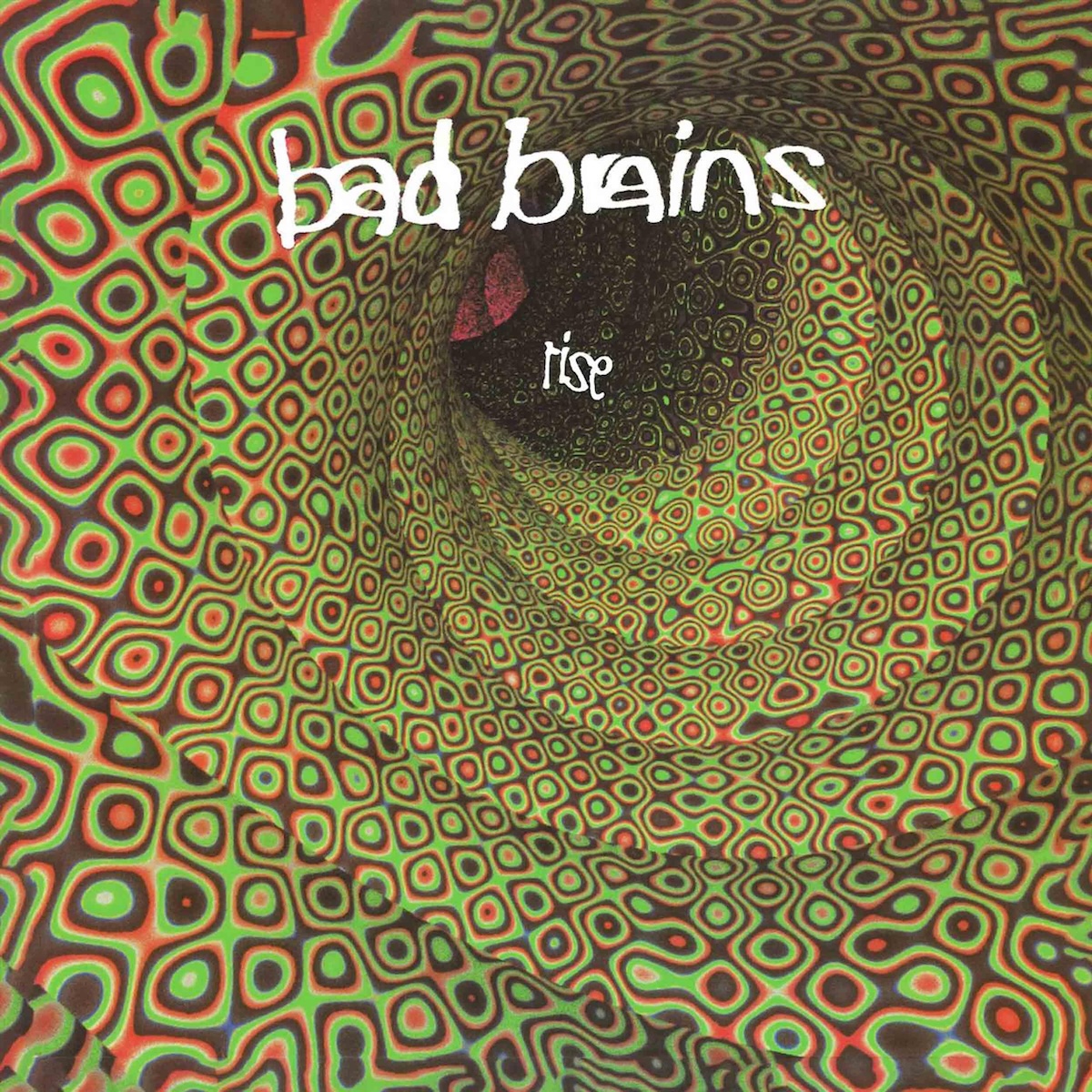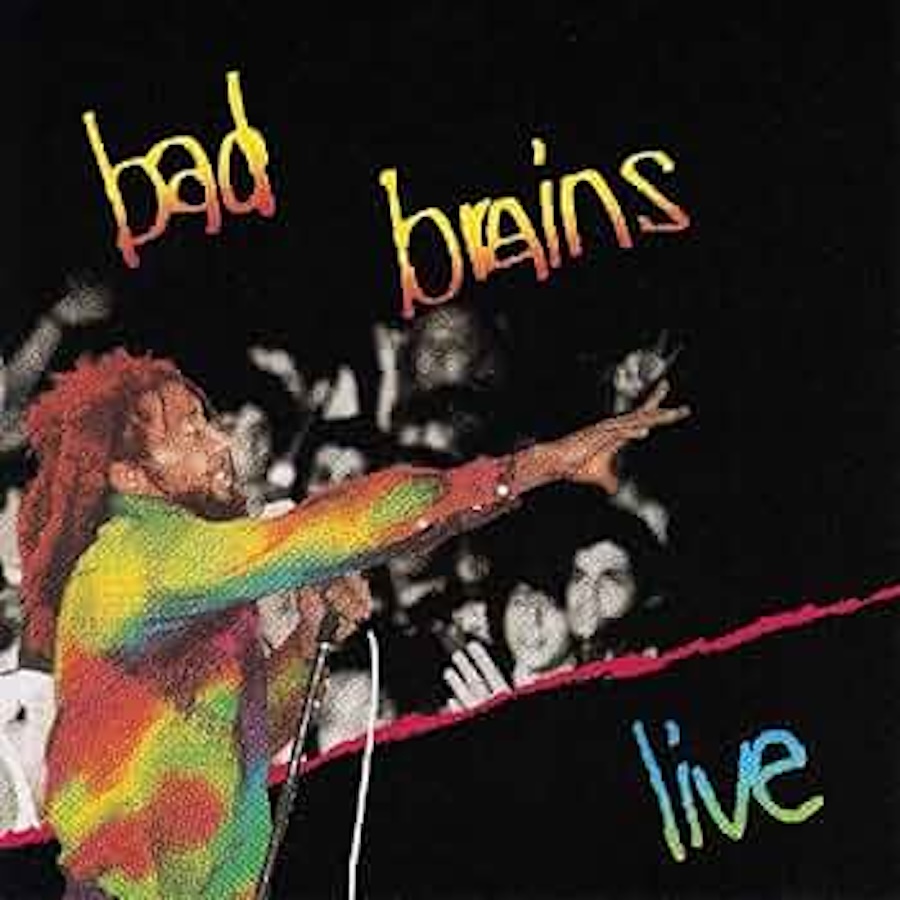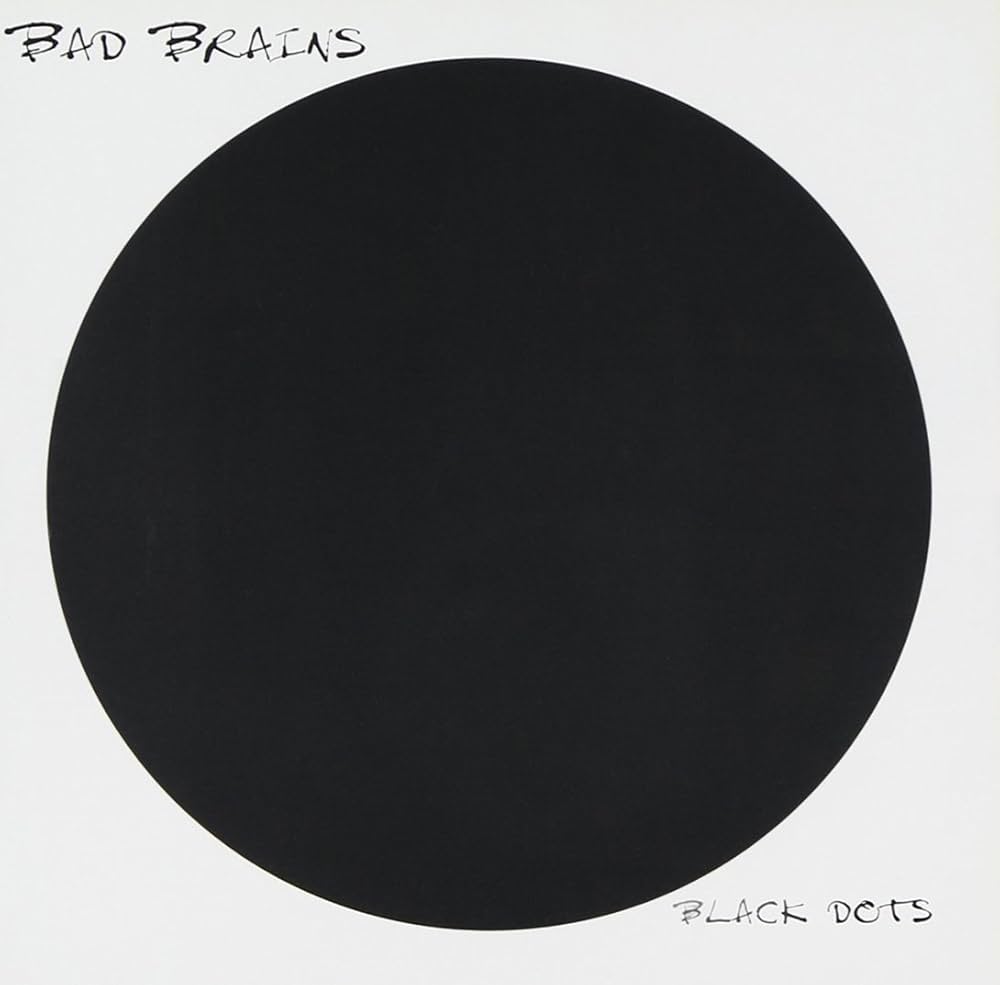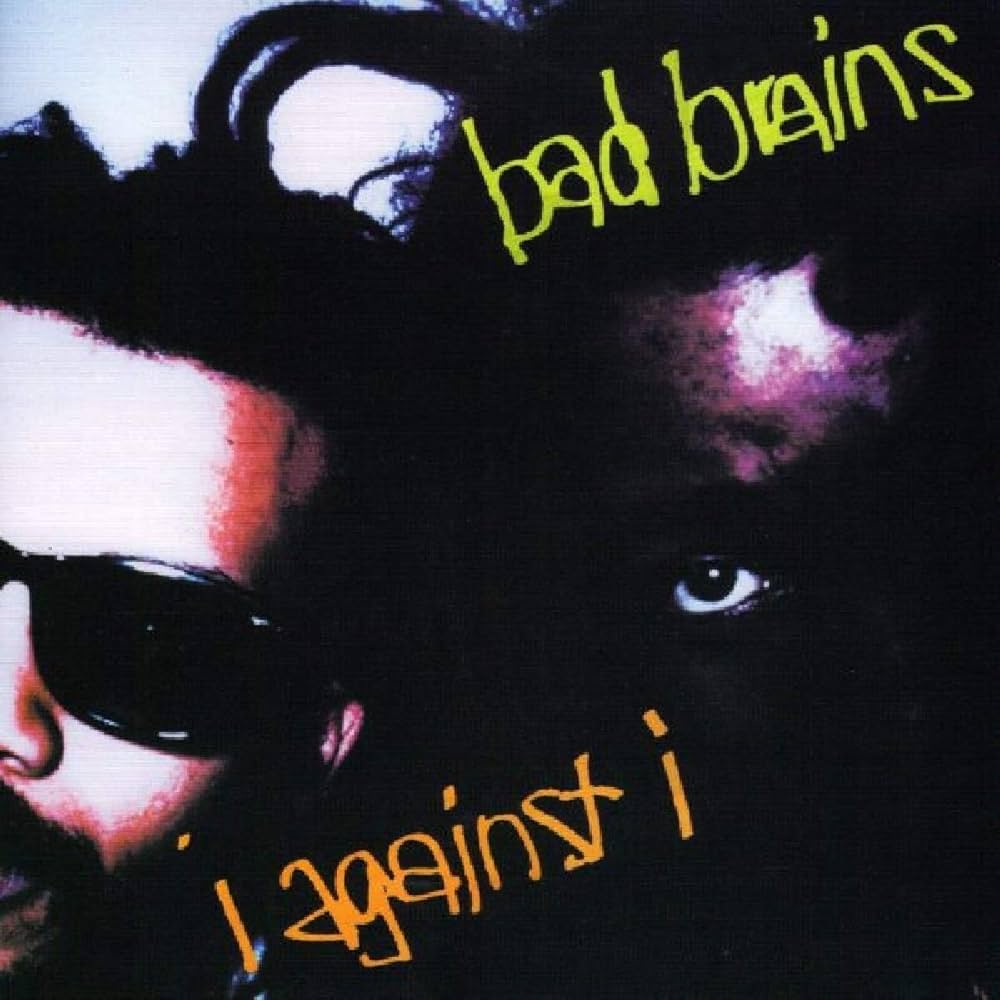Paul and Earl Hudson were born to a Jamaican mother and an American father who worked as a mechanic for the U.S. Air Force, and they moved all over the country before settling down in Washington, D.C. In 1976, the Hudson brothers formed a jazz fusion band called Mind Power, Paul on vocals and Earl on drums, alongside guitarist Gary Miller and bassist Darryl Jenifer.
Albums by the Ramones and the Dead Boys opened the Hudsons’ minds to the new phenomenon of punk rock, and a Bob Marley concert helped them get in touch with their Jamaican roots and start exploring Rastafarianism. Soon, Mind Power became Bad Brains, with Gary Miller taking the name Dr. Know and Paul Hudson becoming H.R. (and later going by other names including Joseph I). The band’s early live repertoire included covers of Black Sabbath’s “Paranoid” and Wire’s “1 2 X U,” and they quickly began to write explosive songs like “Attitude” and their debut single “Pay to Cum.”
An early Bad Brains show opening for the Dead Boys at the Bayou in 1979 was a watershed moment for D.C. punk, and the band was worshiped as heroes of a hardcore scene where they stood out as a complete anomaly. The members of Bad Brains were Black, about five years older than members of the mostly white contemporary bands like the Teen Idles, and virtuoso musicians in a genre largely defined by passionate amateurism. British bands like the Clash had already started to combine punk rock with dub reggae, but Bad Brains took the fusion much further, playing full-on roots reggae songs along with blisteringly fast anthems that also had fundamentalist Rastafarian lyrics.
Bad Brains were a legendary live band that won diehard fans everywhere they toured, but H.R.’s erratic behavior and creative differences with the rest of the band led to a series of breakups and lineup changes that stalled their ascent. They blazed a trail for generations of Black punk and metal musicians, including the members of Fishbone and Living Colour, who they eventually teamed up with as the supergroup Living Fish Brains. Bad Brains played the Afropunk Festival several times as one of the fest’s most significant forebears, and the original quartet last toured together in 2017. Dr. Know was hospitalized after a cardiac arrest in 2015. H.R. has suffered from a rare and painful condition called SUNCT syndrome, though he has sporadically continued to perform, embarking on a solo tour in October.
The double LP concert recording Live at the Bayou: Washington, D.C. July 14, 1980 / March 15, 1981 will be released by Time Traveler Recordings as a Record Store Day exclusive on November 28. It’s just the latest of several Bad Brains live albums from the band’s ’80s heyday, and some of the band’s most popular songs appear on multiple studio releases. To help you sort through highly influential but often cluttered and confusing discography, here’s a ranking of every Bad Brains album.
16. Rise (1993)

Alternative rock’s commercial explosion in the early ’90s created the opportunity for many influential ’80s underground bands to release music on major labels for the first time. Unfortunately, by the time Bad Brains signed with Epic Records, the Hudson brothers were no longer in the band, their places taken by Trinidad-born vocalist Dexter Pinto and Cro-Mags drummer Mackie Jayson. Pinto went by Israel Joseph I, a stage name that was perhaps misleadingly close to one of H.R.’s aliases, and did a reasonably good impression of the original Bad Brains frontman on Rise when he wasn’t delivering terrible rap verses on “Miss Freedom.” The highlight of the album is a cover of Graham Central Station’s ’70s funk classic “Hair,” but the brief “Coming in Numbers,” with its hair-raising guitar solo and abrupt tempo changes, is the only track on Rise that really evokes vintage Bad Brains.
15. A Bad Brains Reunion Live from Maritime Hall SF (2001)

From 1998 to 2000, the original Bad Brains lineup toured under the name Soul Brains due to a legal dispute with a former manager. The musicians hit their marks on the live album recorded at a 1999 show in San Francisco, but H.R.’s lackadaisical delivery is a sharp contrast to his fierce vocals on other Bad Brains live recordings from the ’80s. Live from Maritime Hall included one new song, “On Like Popcorn,” and a studio version, credited to Soul Brains, appeared on the 2000 compilation Tribute to Bad Brains. “The sound on this disc is OK, not great. The band seems a bit rusty but they still manage to get the job done,” Punk News reviewer Duk wrote of Live from Maritime Hall.
14. I & I Survived (Dub) (2002)

H.R. spearheaded the band’s early explorations of reggae, but the other three members of Bad Brains ironically recorded the band’s only all-reggae album without him. The mostly instrumental I & I Survived (Dub), released shortly after the Soul Brains era when the band regained use of its original name, removes all doubt about whether Bad Brains could’ve been a solid conventional reggae band. Ultimately, though, tracks like “Cowboy,” which interpolates Ennio Morricone’s The Good, The Bad & The Ugly score, feel like pleasant novelties. Dr. Know’s heaviest shredding on the album is on a version of “How Low Can a Punk Get” that’s much slower than the 1983 original, and heavily samples dancehall legend Barrington Levy.
13. In Dub – Arranged by Kein Hass Da (2014)

In Dub features remixes of reggae songs from early Bad Brains albums like “The Meek” and “I and I Rasta.” It’s not necessarily a very authentic dub reggae album—most of the mixes are by German or Canadian musicians, along with a couple of bass-heavy dubs by Darryl Jenifer—but it’s an enjoyably spacey trip through an echo chamber of heavy reverb.
12. Quickness (1989)

At the time of its release, Quickness was the band’s most popular album, but also its most controversial. H.R. had made homophobic remarks in interviews with small publications earlier in the band’s career, but the ugly sentiments about AIDS in the song “Don’t Blow Bubbles” brought the band’s bigoted views into their music and tainted the band’s reputation. Darryl Jenifer later expressed regret for the song’s “ignorant” message, and “Don’t Blow Bubbles” was presented in instrumental form on the most recent 2022 reissue of the album. Quickness, with Mackie Jayson on drums, was the first Bad Brains album without all four original members, and only the bombastic opener “Soul Craft” remained in the band’s setlists for more than a couple years.
11. Live (1988)

SST Records, the legendary California punk label founded by Black Flag’s Greg Ginn, signed Bad Brains in 1986, releasing I Against I and several H.R. solo projects. The first Bad Brains live album was released by SST as simply Live, but the band would release several other better concert recordings in the years to come. H.R.’s vibrato on “At the Movies,” however, is something to behold. SST released more recordings from the same tour on 1991’s Spirit Electricity EP.
10. The Youth Are Getting Restless (Live at the Paradiso, Amsterdam 1987) (1990)

The Youth Are Getting Restless features more raw, visceral versions of songs from the slicker Bad Brains studio albums produced by Ron Saint Germain and Ric Ocasek. It also includes the best available recordings of some of the band’s favorite covers: Dennis Brown’s “Revolution” and a reggae medley of the Beatles’ “Day Tripper” and the Rolling Stones’ “She’s a Rainbow.” “Non-fans may not believe the words are in English as they are shouted and growled and crooned and shrieked, sometimes all in one phrase,” Jon Pareles wrote in the New York Times review of The Youth Are Getting Restless.
9. God of Love (1995)

In 1993, a young California band called Deftones signed to Maverick Records, the label co-founded by Madonna. Years before Deftones started selling millions, they convinced Maverick to also sign one of their favorite bands, and the original lineup of Bad Brains reunited for its first studio album in nearly a decade. God of Love is uneven but occasionally inspired, and it represents the highest mainstream profile Bad Brains ever enjoyed. Ric Ocasek returned to produce the album, Bad Brains opened for the Beastie Boys in arenas, and MTV played the video for the title track.
8. Into the Future (2012)

In 2006, H.R. moved to Baltimore, and for several years lived in a dilapidated Jonestown building where local bands practiced, including a couple of my bands in the 2010s. All the musicians who played in the warehouse on Low Street were aware that a punk legend resided somewhere upstairs, but we never got a glimpse of him. During H.R.’s time in the city, though, he married a Baltimore herbalist, and released what will likely remain the final Bad Brains studio album. Into the Future feels more like a summary of the band’s past than a new path, but it’s an effective one. The band dedicated the album to Adam Yauch of the Beastie Boys, who died of cancer in 2012, and the closing instrumental “MCA Dub” is meditative and hypnotic.
7. Live At CBGB 1982 (2006)

After Bad Brains started getting blackballed from Washington, D.C. venues and wrote “Banned in D.C.,” the band relocated to New York City in the early ’80s, becoming a fixture at punk rock’s spiritual birthplace, CBGB. It’s not the cleanest Bad Brains live tape, but there’s a gnarly snap to Earl Hudson’s snare drum that suits the material. The recording makes you feel like you’re right there in the East Village with the band when H.R.’s mic feeds back on “I and I Rasta” and he announces the bar’s last call for drinks in the middle of “All Rise to Meet Jah.”
6. Live at the Fillmore 03/20/1982 (2010)

You couldn’t ask for a better opening proclamation for a document of an ’80s punk band at the peak of its powers: “Let’s dedicate this night to Ronald Reagan and his puppets.” And in terms of sound quality, performance intensity, and song selection, the band’s 1982 San Francisco set represents the best Bad Brains live album on the market.
5. Black Dots (1996)

Bad Brains never recorded for D.C.’s most storied punk label, Dischord Records. But Bad Brains shared a practice space with Dischord’s first band, the Teen Idles, and recorded a 1979 demo in the first iteration of Inner Ear Studios in engineer Don Zientara’s Arlington basement. Half of the 16 tracks on the Black Dots demo that was finally unearthed in 1996 are songs the band never put in a proper album, including corkers like “Don’t Bother Me” and “At the Atlantis.” The earliest recordings of classics like “The Regulator” and “Supertouch/Shitfit” are a little slower than their definitive album versions, and H.R.’s lyrics are as clear and legible as they’d ever be. Black Dots is a vital and revealing glimpse at how quickly Bad Brains were becoming a great band.
4. Build a Nation (2007)

A great supporting cast assembled to help Bad Brains make its best late-period album. Adam Yauch produced Build a Nation, John Zorn sideman Jamie Saft joined the band in the studio on keyboards, trailblazing metal label Megaforce Records released it, Annie Liebovitz photographed the band for the album sleeve, and System of a Down’s Shavo Odadjian directed the music video for “Give Thanks and Praises.” The result is the band’s first album to chart on the Billboard 200, with Darryl Jenifer’s bass tone sounding better than ever, and an excellent studio version of the Black Dots highlight “Send You No Flowers.” “Build a Nation roars and throbs with vintage fire. H.R.’s vocals, dub-echoed and buried, sound like they’re transmitted from Olympus,” Joe Gross wrote in the SPIN review of the album.
3. Rock For Light (1983)

The first two Bad Brains albums have six songs in common, but also enough unique material to make both releases essential. Rock For Light added classics like “Coptic Times,” “At the Movies,” and the title track to the band’s repertoire. And producer Ric Ocasek, still in the middle of his crowd-pleasing reign of hits with the Cars, didn’t polish up the band’s thrashing sound as much as you might expect. Unfortunately, Rock For Light was given a remix in 1991 that sounds brighter and less powerful, but the superior original 1983 mix is worth seeking out. Rock For Light appeared on Kurt Cobain’s famous handwritten list of his 50 favorite albums.
2. I Against I (1986)

The first of many Bad Brains breakups came after Rock For Light, with H.R. forming the band Human Rights and releasing his first solo record, It’s About Luv, in 1985. Bad Brains reconvened a year later, and played gigs with Megadeth and Slayer before signing to SST Records and recording their most overtly heavy metal album. Ron Saint Germain gave the album a big, booming drum sound in contrast to the band’s scrappy early records, and he went on to produce several Bad Brains-influenced bands including Living Colour, 311, and Sonic Youth. “The small problem is H.R.’s lyrics, which he’s still smart enough to blur with the speed and attitude that make the lead and title cut their strongest song since “Pay to Cum,’” Robert Christgau wrote in the Village Voice review of I Against I.
1. Bad Brains (1982)

Bad Brains signed its first record deal with Reachout International Records, a New York City label that at the time exclusively released music on cassette. Their self-titled debut for ROIR, or “the yellow tape,” as it came to be known, was a boombox classic for a generation of skater kids and stoners. The band were already beginning to put reggae breathers between their speed punk assaults, but “Sailin’ On,” “Fearless Vampire Killers,” and “Banned in D.C.” set a standard that hadcore bands have aspired to for decades. The band recorded the album at 171-A Studios in the East Village over several weeks, but some of its most potent tracks were recorded live in the studio in a single take, including “Pay to Cum” and “I Luv I Jah.”



